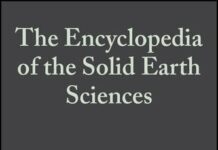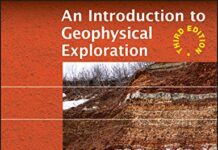
Ebook Info
- Published: 2009
- Number of pages: 496 pages
- Format: PDF
- File Size: 31.54 MB
- Authors: Philip Kearey
Description
The third edition of this widely acclaimed textbook provides a comprehensive introduction to all aspects of global tectonics, and includes major revisions to reflect the most significant recent advances in the field. A fully revised third edition of this highly acclaimed text written by eminent authors including one of the pioneers of plate tectonic theory Major revisions to this new edition reflect the most significant recent advances in the field, including new and expanded chapters on Precambrian tectonics and the supercontinent cycle and the implications of plate tectonics for environmental change Combines a historical approach with process science to provide a careful balance between geological and geophysical material in both continental and oceanic regimes Dedicated website available at www.blackwellpublishing.com/kearey/
User’s Reviews
Editorial Reviews: Review “Many readers will be familiar with this excellent textbook . . . The subject coverage is more comprehensive than in previous editions with many of the processes and concepts being illustrated with case studies drawn from the recent literature. ” (Mar Geophys Res, 2009) “A massive list of mostly critical references cites the most important works the world over.” (CHOICE, November 2009)”An excellent in‑depth overview on one of the most revolutionary topics in the earth sciences. … Not only clear and comprehensive, but also pleasant to read. It is a highly recommended must‑have on the bookshelves of earth scientists for some time to come.” (Geologos, December 2009)”Global Tectonics will find its place in all well equipped libraries and a personal copy will be of use for any geoscientist who needs a comprehensive overview.” (Surveys in Geophysics, September 2009)”This textbook provides a comprehensive overview of the field of global tectonics. Because the field has changed significantly since the last edition was published, the majority of text and figures in the third edition are new.” (Book News, September 2009) From the Inside Flap The third edition of this widely acclaimed textbook provides a comprehensive introduction to all aspects of global tectonics. Revisions to this new edition reflect the most significant recent advances in the field, providing a thorough, accessible, and up-to-date text. Combining a historical approach with process science, Global Tectonics provides a careful balance between geological and geophysical material in both continental and oceanic regimes. New and expanded chapters in this third edition include Precambrian tectonics and the supercontinent cycle; mantle processes, including mantle plumes; the implications of plate tectonics for environmental change; large igneous provinces; rifted continental margins; ocean ridges; continental transforms; subduction zones; and numerous orogenic examples. Written in an engaging style, this important text is an essential reference for undergraduates and graduate students who have a basic introduction in the geosciences. From the Back Cover The third edition of this widely acclaimed textbook provides a comprehensive introduction to all aspects of global tectonics. Revisions to this new edition reflect the most significant recent advances in the field, providing a thorough, accessible, and up-to-date text. Combining a historical approach with process science, Global Tectonics provides a careful balance between geological and geophysical material in both continental and oceanic regimes. New and expanded chapters in this third edition include Precambrian tectonics and the supercontinent cycle; mantle processes, including mantle plumes; the implications of plate tectonics for environmental change; large igneous provinces; rifted continental margins; ocean ridges; continental transforms; subduction zones; and numerous orogenic examples. Written in an engaging style, this important text is an essential reference for undergraduates and graduate students who have a basic introduction in the geosciences. About the Author PHIL KEAREY was Senior Lecturer in Applied Geophysics in the Department of Earth Sciences at Bristol University, U.K. prior to his premature death in 2003. In his research he used various types of geophysical data, but gravity and magnetic data in particular, to elucidate crustal structure in the eastern Caribbean, Canadian shield and southern England. KEITH KLEPEIS is a Professor in the Department of Geology at the University of Vermont, U.S.A. He specializes in the areas of structural geology and continental tectonics and has worked extensively on the evolution of orogenic belts and fault systems in New Zealand, Patagonia, West Antarctica, Australia, British Columbia and southeast Alaska. FREDERICK J. VINE is an Emeritus Professor in the School of Environmental Sciences at the University of East Anglia, Norwich, U.K. He was made a Fellow of the Royal Society of London and has received numerous awards for work on the interpretation of oceanic magnetic anomalies and ophiolites, fragments of oceanic crust thrust up on land, in terms of sea floor spreading. Read more
Reviews from Amazon users which were colected at the time this book was published on the website:
⭐Difficult to read as a textbook. This book appears to be well researched so it may be better as a reference book. At times the published scientific evidenced is summarised and placed with similar related evidence with little regard to flow, comprehension or consistent used of terminologies when referring to the same thing.
⭐The Book may be old, but it is not worthless as per some other reviews here. The book covers the basics pretty well and thats what most of the geo students need. Sure, there may be other books with better pictures, but the concepts that you need for tectonics is sufficiently present in this book.I passed out of college about 10 years back. Read the same book then. Glad to find it on Amazon. I own the book now.Ankan BasuGeologist/Geochemist
⭐Great diagrams and very informitive.!!!
⭐if you’re in a plate tectonics course, i hope your prof requires this particular textbook because though chapters can be long, it’s easy to read, understandable, and actually interesting. more qualitative than quantitative.
⭐It is an excellent book that puts together major up-to-date, or updated tectonic concepts in simple, clear, and understandable language.
⭐Good book, very useful
⭐Absolutely wonderful textbook
⭐I wouldn’t recommend this book for someone trying to get a solid foundation in the current state of the field of plate tectonics for several reasons. The writing style of the book can only be described as stodgy and stiff, lacking in verve or color. This is not John McPhee. The book seems a bit out-of-date when you look at the dates of recent references. Very few from the last five years, though it has a copyright date of 2009. The authors seem to like jargon and do not like concise clear phrases. Also, the illustrations seem amateurish, and old-fashioned, often too small for the amount of information in them. It’s not a bad book, but much of it was over my head.
⭐Plate tectonics was an elegant newcomer on the block when I was introduced to it in the 70’s while studying with the Open University. Since then, the skinny child has put on considerable flesh as it has developed into adolescence, but I find it still as elegant and, perhaps, even more breathtaking. And it is still a work in progress with dynamic new insights occurring at increasingly rapid rate. This excellent text book brings the theory bang up to date and hints at exciting new potential. It should prove an extremely helpful tool for university students and a handy, concise reference for academics in related fields. For the interested general reader, like myself, it is pure treasure trove!It is a relatively large, not too floppy, paperback and its almost 500 pages are crammed full of fascinating, updated information on the subject. A third edition of the work, its contents have been increased by almost two thirds from the previous one. The writing style is clear, concise and not too difficult as to exclude the general reader. The paper quality is good and the fonts used clear and quite legible, though small. It is profusely illustrated throughout with numerous explanatory maps and diagrams. While most are in black and white, which I find adds to their clarity and strong explanatory effect, there is a central section in full colour. I also like the clear, logical approach adopted throughout the presentation and look forward to absorbing the contents at my leisure. As an anti-social, sedentary, septuagenarian, this book should help to keep the grey matter ticking over!
⭐This is a review of the second edition.Although I too picked this up because it was listed in an Open University course as a good read, I read it for fun. I thought I understood plate tectonics but this book really opened my eyes. There is a lot more going on under my feet than I realised!The book does come across as a bit “jumpy”. It describes the history of geological thinking about a particular puzzle and so takes the reader from “wrong” answers to “right” ones backed up with lots of diagrams illustrating lots of ideas and possibilities (e.g. 12 types of transform faults in one diagram). Some of the writing was hard reading and even though the diagrams look great they took some thought.I suspect that this book merits deeper study than I gave it. I also think its disjointed nature reflects the enormous complexity of the topic. I came away with the impression that it is very hard to generalise. Every plate boundary is different – because of their history, size and age (how do you compare the Himalayas with the Caribbean?). Maybe that’s the wrong lesson but it was mine.If you are looking for a fun read about geology, this isn’t it. If you want to chew through a lot of ideas, this might be for you.
⭐TThis is a magnificent book. It has all the characteristics you may desire: (i) full coverage of all topics of this science branch, in a systematic order; (ii) very concise writing; (iii) very clear exposition in plain language; (iii) historical approach, by which you can follow the development of the science, helped by authentic reports made at their times of discover ; (iv) apt for a basic learning by any student of the matter; (v) but, at the same time, fully readable by somebody of mean cultural preparation even in different fields, just willing to understand and enjoy the evolution of this branch of human knowledge. There are repetitions, but they are instrumental to describe, or even stress, the correlations, or “intersections” between different paths of research and explanation. It should have taken an awful amount of effort to prepare. I would suggest this book as a model for similar “global” text on other sciences.
⭐Great book ideal for novices to the subject and more advanced in the subject. Some excellent images to aid understanding. I used this during my degree but it’s still good to refer to as a refresh.
⭐Great book. Great delivery
Keywords
Free Download Global Tectonics 3rd Edition in PDF format
Global Tectonics 3rd Edition PDF Free Download
Download Global Tectonics 3rd Edition 2009 PDF Free
Global Tectonics 3rd Edition 2009 PDF Free Download
Download Global Tectonics 3rd Edition PDF
Free Download Ebook Global Tectonics 3rd Edition

